From dial-up to live blogs: How ABCNews.com helped transform online news over 25 years
"There was no playbook and we did what we thought what was best."
The internet was starting to come into its own in 1997.
Most Americans who could surf the web were only able to do so with slow dial-up connections and many major newspapers and networks hadn’t yet established an online presence.
It was at this moment that ABC News decided to extend its online reach with a dedicated website to complement its decades of broadcast journalism. For the reporters and producers who helped start the site, that task was a challenge.
"We used to joke it was the Wild West. Everyone was charting their own path. There was no playbook and we did what we thought what was best," said Zach Toback, a vice president at the company who worked as an associate producer in the multimedia department when ABCNews.com launched on May 15, 1997.

Today, ABCNews.com has grown into one of the top-performing news sites in the world. Lulu Chiang, ABC News' vice president of digital content, said that a lot of the team's early decisions paid off, laying the foundation for what are now common elements of digital storytelling, including live video.
"There's a lot of information out there and we're the place of record," she said. "We were very early to the game and our work paid off."
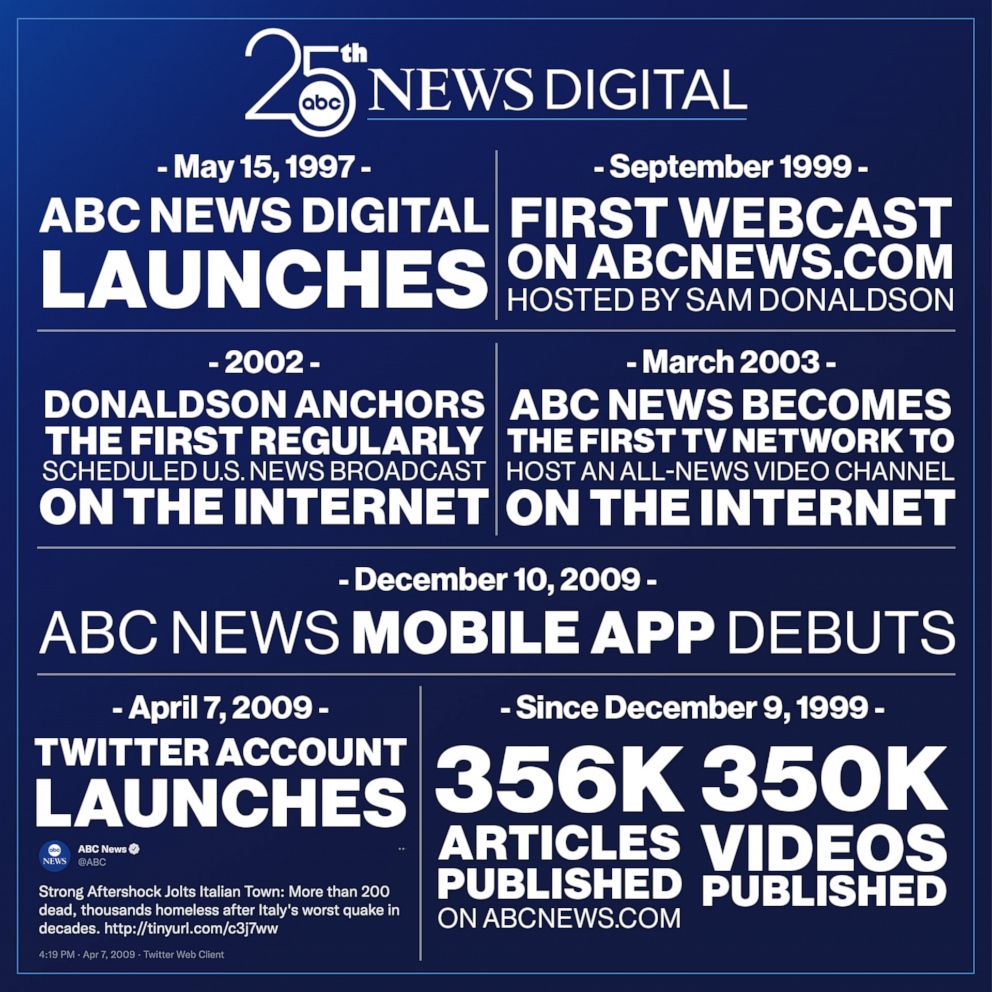
Into the unknown
Toback said the internet speeds and technology at the time meant the news site had to be constructed with limited features that would be easily accessible to visitors. When the site launched, it featured articles based on news scripts from that day's "World News Tonight" broadcast, some original pieces and articles from The Associated Press.
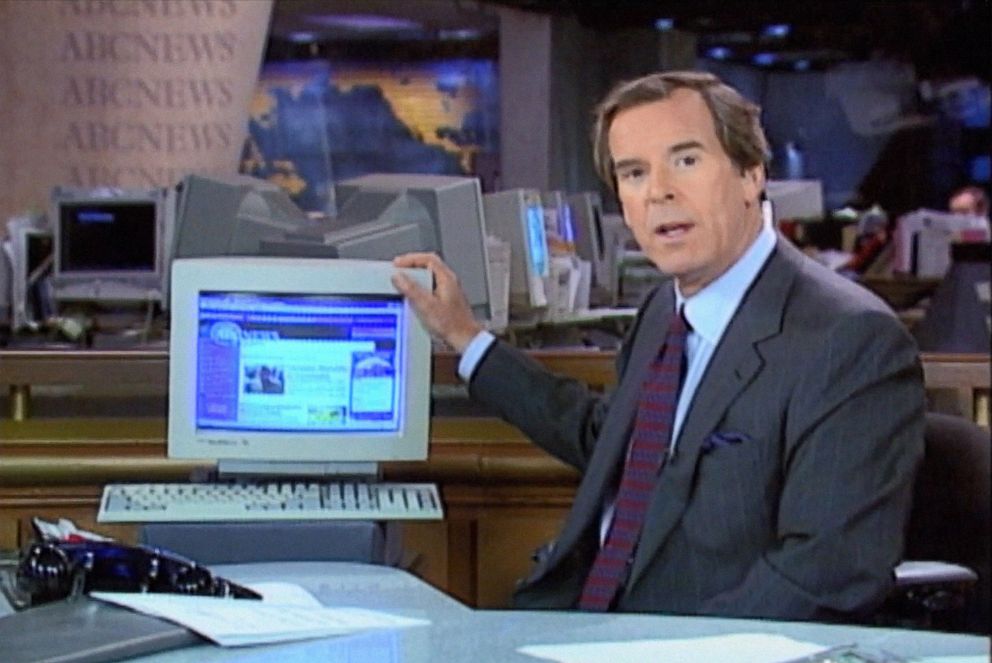
The website also offered video clips from "World News Tonight" segments that were no more than 20 seconds long, according to Toback.
"You had to download to play them, there was no streaming, and even these short clips took a long time to download," he said.
The site launched with a major investigative piece, "The Nuclear Threat," which looked at the difficulty of dismantling nuclear weapons in the former Soviet Union.
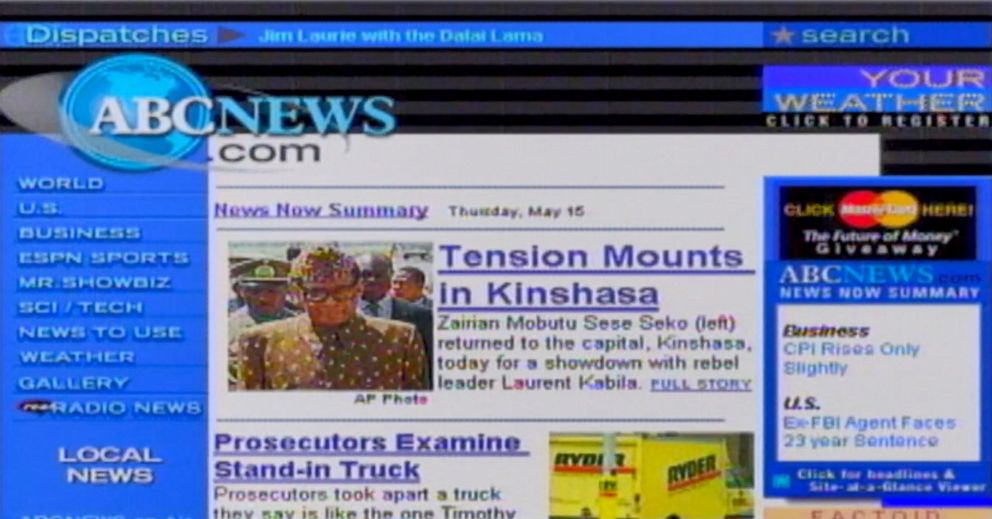
The article included exclusive videos and audio that impressed observers. "'The Nuclear Threat' illustrates what ABC hopes to do with the medium," Forbes wrote in a May 28 article.
Growing with technology
As time went on, the digital team began to notice some trends with users and quickly adapted their production.
They saw higher traffic to the site during the afternoon hours, which Toback said correlated with lunch breaks. People working in offices and businesses had access to high-speed internet and they used it to keep up with the latest news.

"We would do a lot of programming in the middle of the day and morning. We sort of programmed our content around the fact that our audience was going to look at it during their work," Toback said.
As the years went by and more Americans turned to the internet for their news, ABCNews.com adapted and added more features.
Hourly updates of the top news from ABC News Radio, on-demand video clips, slideshows and more were introduced to complement the in-depth news articles and breaking stories on topics such as politics, the environment, technology and crime.
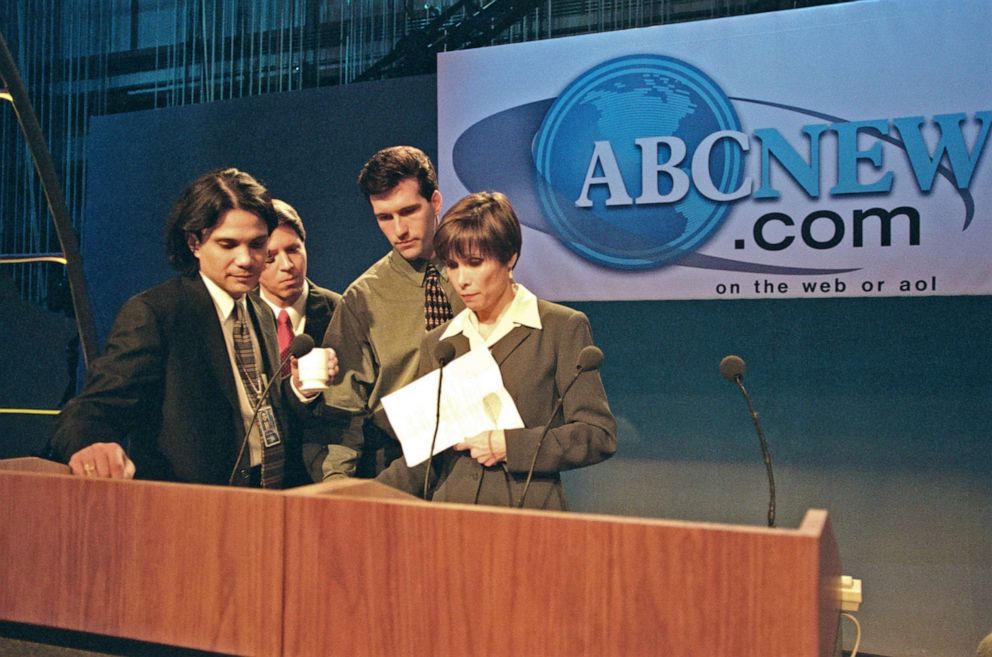
Doug Looney, ABC News' director of post-production and distribution, said getting audio on the site years ago was no easy task. To do so, ABC News partnered with RealNetworks to stream the radio updates, creating the files from analog recordings, said Looney, who started out as a video designer for the website.
"We would take it back, capture it and digitize it into a computer ... and create a Real Audio file and that would be a streaming thing," Looney said.
He said that as soon as the site was able to provide its own all-digital streaming audio, the team jumped on it. And that was only the beginning of ABCNews.com's evolution.

Toback said the digital team pushed the multimedia storytelling experience for its audience. Everything from photo slideshows to GIFs were pushed to the site to enrich the content, which now included more original reporting from digital reporters.
"That was the beauty of the internet. [News] went from one-dimensional to two- and three-dimensional," Toback said.
Looney said that when the website started to use 3D graphics and presentations to accompany stories, readers took notice. For example, the site ran a special interactive piece in 2006 where readers could take a tour of the USS Arizona, a Navy ship that was sunk during the attack on Pearl Harbor.
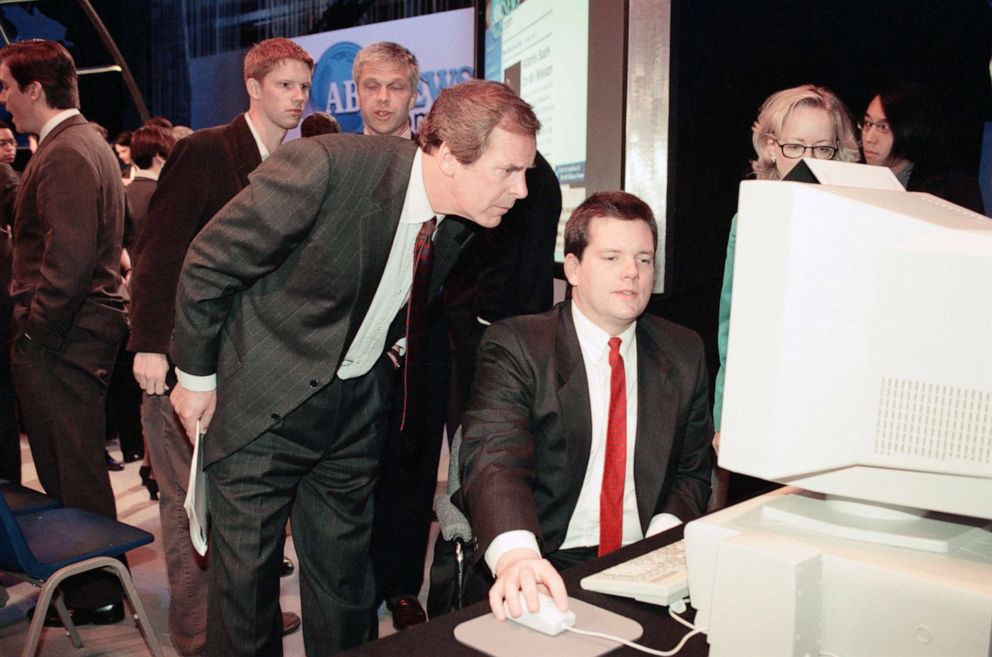
"I know when we would pitch ideas like that to other groups [at ABC News], that's when they would go, 'Whoa, what's that? You can do that on the site?'" Looney said.
Tapping into Web 2.0 and beyond
ABCNews.com's growth jumped throughout the 2000s and 2010s as people increasingly consumed news on the web.
Since December 1999, ABCNews.com has published more than 356,000 articles, according to Chiang. Similarly, in 2004, the site was publishing just six videos a day and today it's more than 100.
"At the end of the day, it's not just about having 'Good Morning America' in the morning and 'World News Tonight' and 'Nightline' at night. It's about having a 24/7 operation and ABCNews.com is key to that," she said.

Looney and other members of the original ABCNews.com team said the network was quick to jump on social media and use that to grow the site's audience. Tweets, Facebook posts and even TikTok videos have helped push ABC News' digital coverage to more people.
"For a long time, it was all about creating that good experience for a computer screen. Now it's a phone screen," he said. "There's a lot of reinventing of the same thing for those platforms."
According to Toback, the most important feature to be added to the site has been real-time coverage of breaking news and major news events through live blogs. The site has given readers these updates on recent stories like the Russian invasion of Ukraine, the COVID-19 pandemic and the Oscars through live streaming video of ABC News Live.
"The ability to have content in real time is the biggest advantage we have. Everyone wants everything yesterday, they don't want to wait," Toback said.
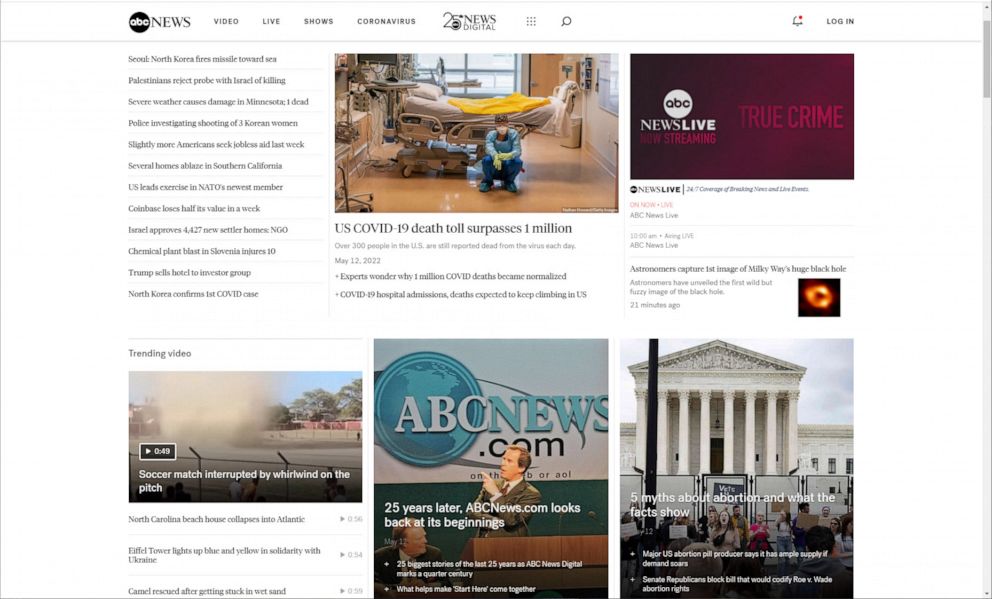
And for Looney, there are still avenues of growth for the website and ABC News' online presence.
"We have seen Web 2.0, but no one really knows what Web 3.0 will be," he said, referring to the coming decentralized version of the internet. "There's going to be a bigger leap in the internet and how people consume media and we're going to be on top of that."
Going forward, Chiang said ABCNews.com will be rolling out a redesign and new features that build upon that foundation built decades ago.
"We are excited about the changes [readers] will be seeing in the weeks and months to come," she said.




